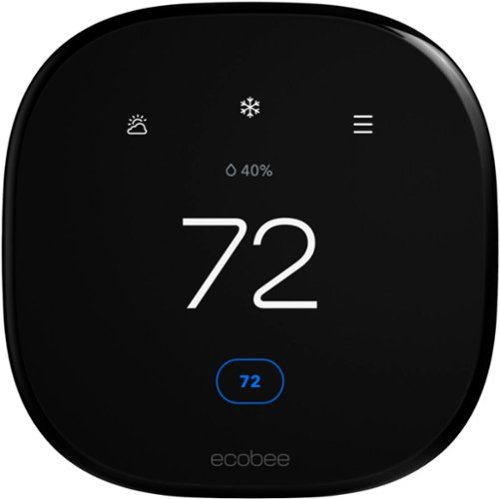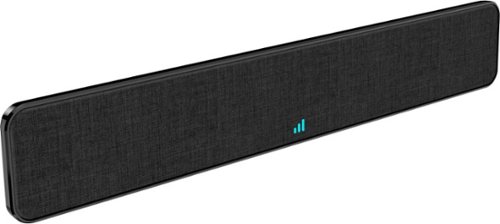bredeker
bredeker's Stats
- Review Count70
- Helpfulness Votes63
- First ReviewFebruary 21, 2014
- Last ReviewMay 18, 2025
- Featured Reviews0
- Average Rating4.7
Reviews Comments
- Review Comment Count0
- Helpfulness Votes0
- First Review CommentNone
- Last Review CommentNone
- Featured Review Comments0
Questions
- Question Count0
- Helpfulness Votes0
- First QuestionNone
- Last QuestionNone
- Featured Questions0
- Answer Count4
- Helpfulness Votes0
- First AnswerFebruary 22, 2014
- Last AnswerOctober 26, 2016
- Featured Answers0
- Best Answers0
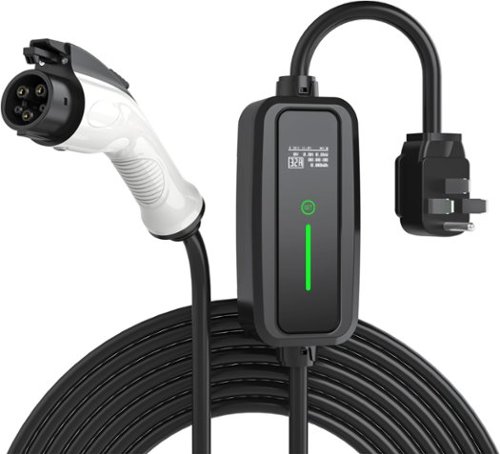
Rexing - J1772 Level 2 NEMA 14-50 Portable Electric Vehicle (EV) Charger - up to 32A - 17' - Black
Charge your electric vehicle (EV) on the go with this portable level 2 charger. Compatible with all plug-in EVs in the United States, except for Tesla, which requires a SAE J1772 adapter. It's compact size and 17-foot charging cable allows for flexible installation and usability. All you need is a 220 Volt or 240 Volt NEMA14-50 outlet to plug the charger into.
Compact, versatile Level 2 EV charger
Customer Rating

4.0
Posted by: bredeker
on September 12, 2023
This electric vehicle charger (aka EVSE - electric vehicle supply equipment) by Rexing works especially well as a portable charger. It is compact, and a canvas carrying case is included for storage. On the vehicle side, it has a J1772 plug, which is currently the predominant standard for non-Tesla EVs and PHEVs. On the power input side, it accepts 240V (making it a Level 2 charger) and features a NEMA 14-50 plug, which is commonly used by RVs (and thus often available at campgrounds). It works fine without the neutral blade of the 14-50 plug being wired (I tested it successfully with a NEMA 14-50 receptacle that did not have the neutral wired). Furthermore, it has a configurable current limit (several preset levels between 10A and 32A). These features mean that this charger can easily work with a variety of 240V circuits and receptacles that may lack a neutral conductor and or may not support 50A of continuous current (for instance, circuits for electric clothes dryers and ranges). You'll just need to purchase an appropriate adapter. So, this charger definitely has some versatility; about all that it can't do is charging from a standard 120V outlet.
(Although I talked breezily about adapting this charger to a variety of receptacles, please remember that you are dealing with significant electrical voltages and currents. Do your research, spring for high quality products, and consult a professional if you are not absolutely sure of what you are doing!)
Of course, this charger will work just fine as an everyday-use charger at home too. The aforementioned versatility may be useful even there, perhaps for new EV owners that may not yet have gotten a purpose-built wall charger installed but have an accessible 240V outlet available. This Rexing charger can be hung on a wall using a single keyhole screw slot on the back (so it's not the most secure mounting design). Its biggest limitation for use in most garages will probably be the length of the cord, which is only 17 feet. (Rexing does make an extension for the J1772 plug, which is honestly quite a handy thing to have for an EV anyway.)
I've been using this charger on a 30A circuit at home (I haven't gotten a higher capacity circuit installed yet), and it has worked perfectly for me with a max current setting of 24A. I appreciate that it has a small screen that reports the internal temperature. Temperatures haven't been concerning at all (although I'm also not using at its max rating of 32A), and nothing has gotten hot to the touch yet. Subjectively, I think it feels like a pretty well-built product.
Considering that this charger has a plug designed for 50A circuits, I think it would have been nice for this charger to support a max current of 40A. (That is about the highest current recommended to use on a 50A circuit.) I don't consider it a major complaint - I'm currently limited to less than 30A anyway, and as nice as faster charging is, lower current is always a little safer. I do wish the cord was longer so that I could use it without an extension, but I recognize that this would make it somewhat heavier and bulkier which isn't ideal for a charger aimed at portability. Nonetheless, I think this portable charger is still worth recommending to anyone that might want a system flexible enough to use with a variety of 240V outlets. It would also be a great charger to start with, and then relegate to on-the-go use once you have a home charging station with higher current support or a longer cable.
I would recommend this to a friend!
0points
0out of 0found this review helpful.
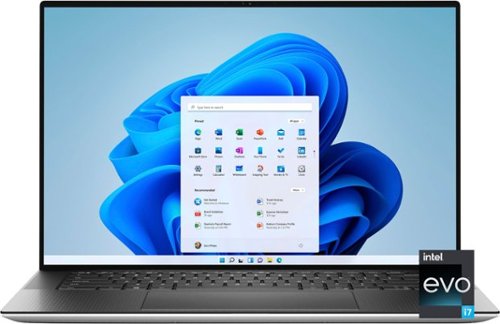
Dell - XPS 15 15.6" FHD+ Laptop - Intel Core i7 - Intel Evo - 16GB Memory - NVIDIA GeForce RTX 4050 - 1TB SSD - Platinum Silver
The XPS 15 laptop is the perfect balance of power and portability with an unrivaled immersive visual and sound experience. Whether you are streaming, editing photos or creating your next masterpiece, the XPS 15 has the power to move your ideas into reality.
Compact yet powerful 15" laptop
Customer Rating

5.0
Posted by: bredeker
on July 1, 2023
This XPS 15 laptop caught my attention initially for its specs, which have been bumped this year to a 13th-gen Intel CPU and Nvidia 40 series GPU. However, the first thing that stood out to me when using this laptop was how compact it felt for a 15-inch class laptop. This is probably due to Dell having really minimized the screen bezels, which cuts down on wasted space around the display. Besides the compact size, it feels mechanically very solid, and it also has a soft touch surface on the palm rest surface that is more comfortable than the pure aluminum shells other models use. (The palm rest has a carbon fiber texture, but I'm not certain whether it is decorative or what creates the soft texture.)
But back to those internal specs. The CPU performance on this laptop feels good, with smooth multitasking given the wealth of cores (a mix of performance and efficiency cores). It also has a good discrete GPU that gives it some extra oomph for light gaming. The GPU is from Nvidia's newest 40 series but is still on the low side of midrange. Nonetheless, I am pleased so far with the performance, since it handles a few games well that my Steam Deck struggles slightly with. The cooling system seems able to cope with this CPU and GPU combination pretty well. Fan speed is managed nicely - although the cooling fan is almost always running, it's most often at a low speed and inaudible to me. (It definitely does get louder under load.) Lastly, I'm pleased that the memory and SSD are reasonably easy to upgrade since it should give this system a longer lifespan.
The screen is bright and has a decent resolution and 16:10 aspect ratio. It's noticeably less sharp at this size than a 4K-class panel would have been. I'm not exactly bothered by it, but a 4K-class panel would take the display from good to great. The keyboard is similarly decent, but not outstanding. It has the centered layout (without a number pad) that I personally prefer, but alas counters it by not featuring a true inverted-T layout for the arrow keys. It feels solid to type on (no flexing) but doesn't quite match other laptop keyboards that I've used. The keyboard has a fingerprint reader in the power button, and Windows Hello is also supported by the camera. I do like having the extra biometric options for unlocking the system. (The camera is a bit lackluster in terms of image quality - unsurprising for one small enough to fit into this laptop's tiny bezel, I guess.)
Dell has streamlined the port selection to 3 USB type C ports, two of which support Thunderbolt. I like this standardization, but it'll be a consideration for people that really hate dongles. Dell does include a small adapter with one USB type A port and one HDMI in the box, which is a nice touch. It would have been nice to see all the ports on the computer support Thunderbolt (the one on the right side is USB 3.2 only), but at least they all support charging from USB Power Delivery. I like that, since I can use the most convenient port relative to how I'm sitting or where the power supply is plugged in. That said, the warnings about a "slow" charger being plugged in are really annoying, and inaccurate. It seems anything but the official charger that came in the box is deemed "slow." However, with a USB power tester, I saw identical wattages being consumed by the laptop from a "slow" charger as from Dell charger (which did not produce a "slow" warning). Thus, I can only conclude that the warning is not based on the actual power supplied, but some detection of manufacturer or model. The laptop also did not draw any additional power from a new USB-C power adapter that supports USB PD 3.1 EDR (Extended Power Range) up to 140W, so it must not implement that standard yet.
I like this laptop a lot. I think it has good power and will meet my needs for quite some time. The component choices are solid, if not exceptional - but that keeps the price tag down too. I wouldn't hesitate it to recommend to anyone else looking for a performance midrange laptop.
I would recommend this to a friend!
0points
0out of 0found this review helpful.
Master your flow with the MX Keys S Combo Wireless Mouse and Keyboard ~ the ultimate combo that combines the power of the fluid, fast precision typing of MX Keys S Wireless Keyboard with the precise, fast scrolling experience of MX Master 3S Wireless Mouse.
Premier Productivity Pairing
Customer Rating

5.0
Posted by: bredeker
on May 29, 2023
This is convenient bundle of Logitech's top-of-the-line keyboard and mouse. The included devices are identical to the stand-alone products. This combo bundle comes with a palm rest for the keyboard (that you can otherwise purchase separately). On the other hand, you'll only get one Bolt receiver and USB cable instead of the two you'd get by purchasing the keyboard and mouse separately. It's probably a good trade-off for most people, but could be meaningful to you if you'd like to take advantage of the multi-device connectivity and need (or prefer) to use a dedicated receiver instead of Bluetooth.
The star device of this bundle is the MX Master 3S mouse, in my opinion. It is the latest in the MX Master line, which I've used since the MX Master 3 - and all of them have been wonderful to use. They're a luxury, certainly, but I think a justifiable one for people that work daily with computers (as I do). The MX Master 3S (which debuted last year) has the same great ergonomics, build quality, and features as the older MX Master 3. My favorite feature - the MagSpeed scroll wheel – is as great as ever. The 3S now supports the new-generation “Bolt” receiver for non-Bluetooth connections, the button clicks are quieter, and it has an improved, higher-DPI sensor. It's pretty much a flawless mouse… unless you prefer to use a computer mouse with your left hand; Logitech unfortunately still does not make a mirrored version of the MX Master 3S.
The MK Keys S is a new device for me. I have also never used the previous version, the (non-S) MK Keys. I had high expectations given my esteem for the MX Master 3/3S and was keen to see how completing my desktop set-up with an MX-series keyboard would foster productivity. In particular, I wanted to add a keyboard that supported multiple devices with Logitech's Easy-Switch function when I was using both personal and work computers at my desk. Unfortunately, after more than a week of using the MX Keys S, I cannot praise it quite as effusively as the MX Master 3S. It's a perfectly fine keyboard: it feels nice and solid, the backlighting is convenient when working in dim light, there's enough customization for my tastes, and it works great with both macOS and Windows computers. The battery life is acceptable, but not outstanding. It uses the same Bolt receiver that the MK Master 3S does, which is convenient. (While that may seem like it should be natural, the previous generation non-S MX Keys uses the older "Unifying" receiver and was still sold alongside the newer Bolt-compatible MX Master 3S in the last year.)
I am slightly dissatisfied with two things about the MX Keys S. The first is completely subjective: it's a membrane keyboard (like a laptop) and I prefer the feel of typing on a mechanical keyboard to that of the MX Keys S. (The MX Keys S is admittedly quieter than a mechanical keyboard, which is crucial for some environments. And Logitech does offer the MX Mechanical keyboard as another product to consider.) The second issue is one that I expect to be remedied very soon: at the time I write this, Logitech's Options+ software does not currently support the "Flow" feature with the MK Keys S. This feature allows you to automatically switch a mouse and supported keyboard between up to three computers - the ones with Bluetooth or a Bolt receiver bound to the three device "slots" on both the mouse and keyboard - by running your mouse cursor into the edge or corner of the screen. As it stands, only the MX Master 3S switches automatically, and I must manually change the keyboard. Since its predecessor, the MX Keys, was supported by that feature, I'm sure Logitech will add support ASAP for this (most likely by the time you read this!). In anticipation of Flow support coming soon, I'm not considering its absence in my overall rating of the MX Keys S.
Apart from being high-quality and feature-rich devices in their own rights, the "Flow" feature in Logitech's device companion software is a great incentive to buy this combo (assuming the software compatibility is ironed out). Even if you're not interested in the Flow feature, the MX Master 3S is the best mouse you can buy and MX Keys S is a very nice (membrane) keyboard, so this bundle is a convenient way to upgrade your desktop set-up with a high-quality pair of input devices. But if you know you would prefer the feel of a mechanical keyboard and the Flow feature interests you, consider purchasing the MX Master 3S mouse and MX Mechanical keyboard separately.
I would recommend this to a friend!
0points
0out of 0found this review helpful.
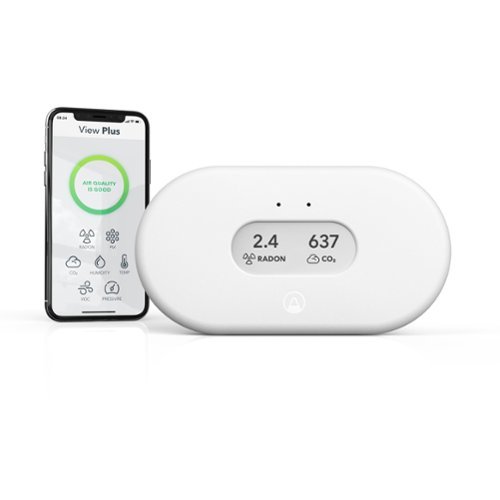
Airthings - View Plus Air Quality/Radon/Carbon Dioxide/Temperature/Humidity with Alexa and Google Assistant - Matte White
9 out of 10 people in the world breathe unsafe air according to WHO guidelines. With View Plus, you can keep your family safe from air pollutants: radon, particulate matter (PM), carbon dioxide (CO2), humidity, temperature, airborne chemicals (VOCs), and air pressure. When there is so much that is out of your control-pollution, asthma, allergies, wildfire, virus-you have more control than you think when it comes to indoor air quality with View Plus. View series products are: battery operated or use USB plug; wireless and WiFi-connected; work as a hub; include a customizable display; connected to an app (iOS/Android) and online dashboard with full data and reporting.
Easy monitoring for some hidden hazards
Customer Rating

5.0
Posted by: bredeker
on November 4, 2022
I was never too concerned over the quality of air in my home. As long as it smelled OK and I had no noticeably unusual symptoms (like persistent drowsiness or headaches), I just trusted the routine monitoring built into devices my home already had. (Carbon monoxide monitoring is pretty standard in smoke alarms now, and we had a radon monitor in the basement as part of an existing radon mitigaton system.) Nonetheless, when I saw the Airthings View Plus, I was interested in what additional insights it could provide about the quality of air in my home. It would be immensely valuable if it could alert me to any unrecognized health danger, and at the very least, it could provide some extra piece of mind. (Plus, it would be an independent check on the accuracy of the radon monitor I already had.) So, I got one, and have been using it for a little over a week - Airthings recommends allowing up to seven days for it to adjust to your home's environment - and I'm quite pleased by it.
The set-up process is very simple. Like many "smart home" devices, you'll install a mobile app and it will lead you through the process. You'll be asked to create an Airthings account, and then pair the physical device to your account. After this set-up, the mobile app remains easy to understand and has a nice, responsive interface. My one disappointment with the app is that the graphs of the air quality measurements are a little simplistic. For instance, I could see some spikes in carbon dioxide levels a few times during the first week, and was trying to figure out what activity in the house they might be correlated with. Dragging my finger on the graph showed the raw measured values - but not the time at which the measurement was taken, which seems like it would be just as valuable as the value. On the other hand, Airthings does have a rich Web-based dashboard that you can access from your account, and the mobile app even has a shortcut to it. The Web dashboard is very good - the graphs there are much more informational, and there's also an option to export the raw data to files you can work with in other programs. And speaking of integration with other programs, I was very pleased that Airthings supports a software API for third parties. I connected my Airthings account with my smart-home system of choice, Home Assistant, and can confirm that it all works smoothly so far.
Not everyone might be interested in measuring their home environment air quality to this degree. But if you're someone who is, the Airthings View Plus is a great way to do it, and it's really simple to get started.
I would recommend this to a friend!
0points
0out of 0found this review helpful.
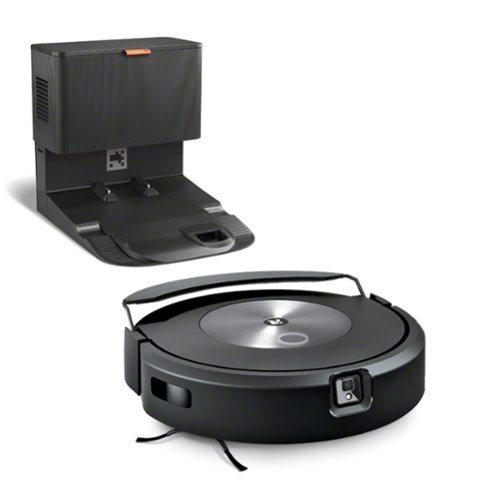
iRobot - Roomba Combo j7+ Self-Emptying Robot Vacuum & Mop - Graphite
The premium vacuum and mop solution like no other. It~s the only 2-in-1 with D.R.I. (Dry Rug Intelligence) means the Roomba Combo j7+ uses carpet detection and the Auto Retract Mopping System that lifts itself to the top of the robot, completely away from carpet preventing wet messes entirely. On hard floors, it vacuums and mops at the same time. The 4-Stage Cleaning system combines our Edge-Sweeping Brush, Dual Multi-Surface Rubber Brushes, Power-Lifting Suction and first-of-its-kind mopping with added pressure for a thorough clean. It's all designed to keep your carpet and hard floors cleaner while avoiding obstacles at the same time~so you can live your life.
Cleaning "Magic"
Customer Rating

5.0
Posted by: bredeker
on November 4, 2022
I've owned a robotic vacuum cleaner from a different brand for several years, but I almost never use it anymore. It cleaned well enough, and it was novel for a while to have it work all on its own. However, it had completel unsophisticated navigation tech - all it seemed to do was blindly move until it hit something, and then change direction. If I wanted it to ignore certain rooms or hazards, I had to lay down special strips that it would recognize as a "fence." Since it took a while to clean up everyday messages (or fence them off), my wife and I just wound up vacuuming by hand anyway.
The Roomba Combo j7+, on the other hand, is so much better, and so much more useful. The j7+ environment navigation capabilities are quite sophisticated. The Roomba built up an accurate floor plan from its first "mapping run" (where it doesn't do any cleaning, but rather just explores and maps its environment), and then it took just a few minutes of work in the iRobot mobile app to mark off the boundaries of each room. Now, we can tell it to clean specific rooms, and off it goes - no need to "fence" off rooms first. It's able to find a path between rooms, and only really bumps into walls and furniture as it tries to get right up to them for cleaning. It will even take pictures of obstacles it detects, so that we can review them later and help it learn how to handle them better in the future.
Having a robotic vacuum that can also mop is a welcome feature for us too, since that's another household chore that it helps us with. Robotic vacuums don't seem to have quite the cleaning power of their manual cousins, and that does go for the mopping feature as well. However, they make up for it by being able to clean more frequently, since they don't require as much time from a human to do their work. Being able to both vacuum and mop frequently is a huge help (especially for us, since we have a young child sometimes spilling drops of sticky snacks that we do not notice). The Roomba has been very good at detecting carpets and rugs, and it cleverly stows the mop pad completely on top of the machine so that it can still vacuum these un-moppable areas. The reservoir for the mop cleaning solution is a bit smaller than ideal, as it doesn't seem to hold quite enough to complete a vacuum+mop job for all rooms on our main floor. Obviously, your experience may vary depending on how large your home is, and how much area is carpeted.
The Roomba still requires a decently sized area clear of obstructions for its base station. The hardest part of the set-up for me was actually finding a good location for this (it's taller than the base station from my old robotic vacuum cleaner too). On the bright side, one base will cover both robotic vacuuming and mopping functions (separate devices would of course each require their own). The base for the Roomba "plus" models like this features a self-emptying capability for the vacuum cleaner dustbin. Not only is it a convenience to not have to remember to empty this, but it allows the Roomba to perform longer cleaning jobs without human intervention required. The base essentially has its own vacuum built in to suck the debris from the Roomba when it docks. This process is brief, but significantly louder than the Roomba itself. The loudness isn't generally a problem, but it might be a nifty feature for iRobot to add to allow the final emptying (after the cleaning job is done) to be be deferred. (For instance, if there's a young child napping within earshot.) The reservoir for the mop still must be filled by hand, though, so there's no benefit from the base station on that.
My wife and I are pretty happy with how much of an improvement the Roomba Combo is over our old (and unused) robotic vacuum. We are pleased that it has both vacuum and mopping functions in a single device. The navigation is impressive, and the ability to easily define room boundaries makes it quite convenient to create cleaning jobs for any or all rooms on our main floor. We think you will also find this to be a great product.
I would recommend this to a friend!
0points
0out of 0found this review helpful.
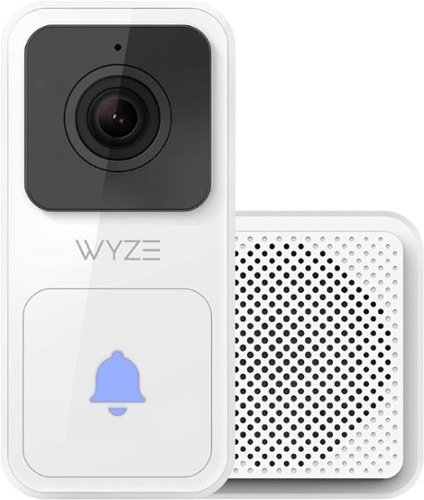
Wyze - Video Doorbell Wired (Horizontal Wedge Included) 1080p HD Video with 2-Way Audio - White
Your front door is an incredibly magical place. It~s where opportunity knocks and excitement arrives in cardboard boxes. It welcomes friendly faces and new acquaintances. And it~s a mighty protector against all that~s unwelcome. That~s why we built you a device that allows you to be at your front door no matter where you are. That~s why we packed advanced camera hardware and smart features into a mighty small frame. That~s why we lab tested it under extreme conditions so it always performs when you need it to. We engineered a video doorbell so magical, it makes you the magician. Infrared LEDs illuminates up to 29.6 ft.
Good value doorbell camera
Customer Rating

4.0
Posted by: bredeker
on October 7, 2022
This doorbell camera from Wyze is cost-effective and offers all the features you'd expect. It's a great starting point: the up-front cost is low, basic service (including event detection and basic cloud storage) does not require a subscription fee, and the premium service tiers are reasonably priced. The installation is pretty easy, and requires no irreversible changes to be made to your existing wiring or doorbell chime box. Altogether, these things made me comfortable with choosing this Wyze camera, and so far I'm pleased with how well it works.
This doorbell camera is designed to replace a traditional wired doorbell, using the same low-voltage AC (16-24 VAC) transformer for power that most existing wired doorbells use. As long as your existing doorbell is such a set-up, you shouldn't have any major issues getting it installed. Compared to a wireless (battery-powered) doorbell camera, this means just a few extra steps on the physical installation to wire it up. I like not needing to worry about replacing batteries, though.
Although there is hardly any installation documentation to speak of in the box, the installation videos available on Wyze's Web site were clear and easy to follow. I did not run into any major issues during installation. However, I will say that there is very little room for excess wire behind the doorbell camera. Although wire nuts and extensions with fork terminals are included, I did not even use them given the lack of depth behind it when mounted. The wedge mounting bracket (intended to use when your doorbell is in a corner) does add some space, but not everyone (like me) will use that. I hesitate to suggest Wyze should make the "flat" mounting place thicker, but perhaps a different terminal design could make it fit better.
The Wyze video doorbell will not trigger your existing chime. You basically end up bypassing it to complete the power circuit to supply the camera with power. Instead, the doorbell connects wirelessly (with a dedicated radio rather than over Wi-Fi) to a plug-in electronic chime. The chime was included. (From what I've seen, some other lower-cost doorbell cameras require the chime to be purchases separately.)
Once physically installed, the Wyze app made the rest of the set-up a breeze. It's been perfectly reliable so far. Viewing both live and recorded video for detected "events" has worked well both at and away from home.
You're automatically enrolled for two weeks of the Cam Plus service (for free). This service features more types of event detections, and basically no recording restrictions. (Without a paid subsription tier, the lengths of recordings is limited, and there's also a "cooldown" between recordings.) Once the free trial is over, the subscription price is reasonable. However, the event detection has also been my biggest disappointment with the Wyze video doorbell. Wyze advertises "advanced AI detection," but in my experience, the motion of tree branches on breezy days sets it off very easily. The day after I installed the doorbell, I was receiving dozens of false alarm "motion detection" alerts for a few hours, until I found the "Detection Zone" setting that let me exclude the part of the view with the trees. Since then, it's been much better, but I've still had a few false alarms, where the only motion appears to be from those trees. (Maybe a branch just snuck into the un-excluded area?) I'm hoping Wyze can train its AI to better ignore motion from background trees, but it seems like a common enough scenario that I'm a little surprised the AI detection had such a hair trigger on it in the first place.
Wyze has done a good job with this product, and at a very fair price. The motion detection was a little too touchy out of the box, but the "Detection Zone" feature did help improve that enough that the quantity of alerts is good now. I'm satisfied for now, and optimistic the detection service might improve with time. Overall, I would happily recommend this video doorbell to anyone that already has a wired doorbell and might be looking to upgrade to a camera to get insight as to what goes on day-to-day at their front door.
I would recommend this to a friend!
0points
0out of 0found this review helpful.
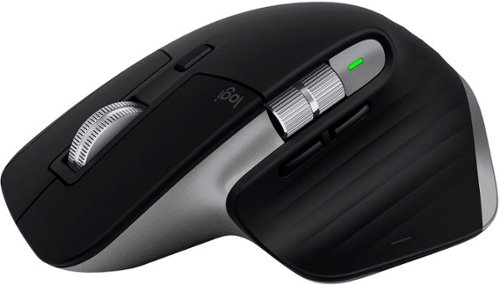
Logitech - MX Master 3S for Mac Wireless Bluetooth Laser Mouse with Ultrafast Scrolling - Wireless - Space Gray
Introducing Logitech MX Master 3S for Mac ~ an iconic mouse remastered for Mac. Now with Quiet Clicks and 8K DPI any-surface tracking for more feel and performance in your Mac computer set-up. Get creative with a complimentary 1-month Creative Cloud subscription with your purchase of MX Master 3S for Mac, and create, make, and do like never before.
An Updated Flagship
Customer Rating

5.0
Posted by: bredeker
on September 29, 2022
Images for this Review
(click to see full-size image)

I'm a (very) satisfied user of a Logitech MX Master 3. It has a comfortable design, premium fit-and-finish, and lots of features (when used with Logitech's companion software). Plus… I still the think the MagSpeed wheel is really cool. Logitech has since released an updated version, the Master 3S, which comes in a "regular" version as well as this "For Mac" edition.
The Master 3S basically avoids messing with perfection. It carries forward all the great things from the original Master 3, while adding some improvements that (in my opinion) do not significantly alter the experience of using it compared to the Master 3. One improvement - a higher-resolution, 8000 DPI sensor - was not a remarkable upgrade for me personally. But another improvement - quieter buttons - is definitely noticeable. I was happy with the feel and sound of the Master 3 buttons, but I will admit that the buttons on the Master 3S just feel a little more damped. Personally, I think it lends an slightly more "premium" feeling to the Master 3S.
(Of course, when I talk about a great design for this mouse, I speak as a right-handed mouse user. If you prefer using a mouse with your left hand, the Master 3S also has the same, completely right-hand-oriented design that is likely an instant deal-breaker.)
The "For Mac" edition of the Master 3S is really just a marketing ploy. The mouse itself is physically identical, except that you can get it in some "exclusive" colors that seem intended to complement the typical light- and dark-gray finishes of Apple's devices. Since this is one of the main selling points of this edition, I've attached a picture of a Space Gray Master 3s next to both a Space Gray and Silver MacBook Pro. It looks fine, but in my opinion, the "basic" Master 3S colors seem like they'd complement just as well. (The color scheme might be a bigger selling point of the "For Mac" edition if Logitech was color matching the array of M1 iMac colors, or at least some of Apple's more recent shades like Midnight and Starlight.)
In addition to the color, the included USB cable (for charging the Master 3S) has a USB Type-C connector on both ends (instead of one Type-A and one Type-C), and there is also no USB Type-A dongle included. I don't mind the cable choice, and I guess I understand that logic behind leaving out the dongle when the mouse is being marketed to Mac (and iPad/iPhone) users (since Bluetooth availability can basically be assumed, and not all Macs even have Type-A ports). However, one of the great features of the Logitech MX series is the ability to easily use the device with multiple computers, regardless of OS. The Master 3S is no different in that regard, so for someone that may want to pair it someday with a non-Apple computer that has no Bluetooth, a dongle will need to be purchased separately. (I'll also note that the Master 3S now uses the newer "Logi Bolt" dongle, instead of the older "Unifying" dongle that Logitech used for years. Since I didn't get a Logi Bolt dongle, I can't say whether it's a change for the better or not - but it's a little bit of a bummer to lose backwards compatibility when I have several of the older Unifying receivers already.)
In all other respects, the "For Mac" edition operates identically to the "standard" version. If you like one of the "For Mac" color schemes, you also shouldn't be afraid to buy one to use with a PC (so long as you have Bluetooth, and either a USB Type-C port for charging or a spare Type-A/Type-C cable).
The price has remained the same from the Master 3 to the Master 3S (which is not insignificant in light of economic inflation between the product launches.) It's still very much a premium price tag, but if you'll use it daily, I think it can be justified. I have used my Master 3 daily since I got it, and it's held up quite well (even the soft-touch finish, which I usually find to wear away quickly on my mice). I have no reason to expect otherwise with the Master 3S, which I'll likely also use daily now (and now bring my Master 3 to use while at work).
I would recommend this to a friend!
+4points
4out of 4found this review helpful.
Enhanced Smart Programmable Touch-Screen Wi-Fi Thermostat with Alexa, Apple HomeKit and Google Assistant gives you automatic energy savings and adapts to your lifestyle by adjusting temperature based on occupancy, suggesting schedule changes, and optimizing your energy savings. eco+ comes with features that automatically turn temperatures down when you're away or asleep. Works with your smart device or Apple Watch and connects to your smart home system like Apple HomeKit, Amazon Alexa, Google Assistant, SmartThings, and IFTTT. Trusted by experts and made for the planet, Smart Thermostat Enhanced delivers unparalleled comfort and savings.
Excellent smart home upgrade
Customer Rating

5.0
Posted by: bredeker
on June 11, 2022
While I can't say a smart thermostat is a modern home necessity, they are a wonderful way to dip a toe in the "smart home" waters. I don't think Ecobee is as widely known in the market. And that really is unfortunate, because I think the Ecobee thermostats are really the ones to beat. I replaced an older Ecobee3 (still completely functional and dependable) with the latest "Ecobee Smart Thermostat Enhanced", and so far, the new one feels just like a refined and updated version of the old one. And I'm not damning the Smart Thermostat Enhanced with faint praise when I say that - the Ecobee3 was great, and I'm very pleased that the new model appears to be just as dependable.
(In the interest of transparency, I was provided with the new Smart Thermostat Enhanced in exchange for posting a review with my honest thoughts about it. And, as I mentioned, I'm a satisfied user of an Ecobee3 - purchased myself - for over three years.)
Since my perspective on the Smart Thermostat Enhanced is more as an upgrader than a new owner, I'll mention some of the factors that influenced me to originally purchase an Ecobee. All of these remain true, though competitors have caught up in some areas (for instance, supporting remote temperature sensors).
First, powering an Ecobee was more straightforward than some other smart thermostats. Like others, it is designed to be powered directly, rather than running exclusively on batteries. The preferred way to do this is to use a "C" wire from your furnace that completes the 24 VAC circuit and allows electrical current to flow continuously in order to power the thermostat. However, not all existing thermostat installations will have a "C" wire (since so many traditional thermostats had no need for it). In that case, the next best thing is to use a "power extender" that helps supply the continuous power over other wires in the installation. Ecobee thermostats include a power extender in the box, whereas some other brands require an additional purchase (which some people might not realize until they're in the knee-deep in the installation of the new thermostat). In lieu of including the power extender, other brands rely on some "tricks" to get power without a "C" wire, and those tricks may not be as reliable.
Second, Ecobee supports remote sensors. This was really the feature that convinced me to initially take the plunge, because our home had areas that were always too hot or too cold relative to the hallway where the thermostat was installed. The remote sensors provide readings from multiple locations so that an Ecobee can maintain a more consistent comfort level throughout your home. The Ecobee remote sensors also include motion/presence detection, so that it can sense when a room is occupied, and accordingly give more or less weight to the temperature reading from that sensor. One slight downside of the Smart Thermostat Enhanced is that it does not include any remote sensors in the box, but you can purchase them separately in packs of two. They are definitely a worthwhile investment if you also have hot- and cold-spots.
Lastly, Ecobee is compatible with Apple's HomeKit automation. Not all of its competitors are, so this may be important to you too. I also found that the open source Home Assistant software would work with my Ecobee, via the HomeKit support.
I was fortunate to have a "C" wire already run when I did my initial Ecobee installation. It was not connected in my furnace control panel, but I was able to figure that out. Once wired, the first-time set-up was straightforward; the remote sensors really did help improve the overall comfort of our home (particularly in winter); and my wife and I have both found it to be a nice convenience to control the temperature remotely. We've also appreciated the monthly reports that Ecobee sends me, which summarize our energy usage and offer a simple (and anonymous) comparison to other Ecobee owners.
I have only had the upgraded Ecobee installed for a week, but everything seems to work the same (which is a good thing). The most noticeable difference is that the screen is a little larger, and the interface has been tweaked. I find some of the features easier to find, like a display with the statuses of all the connected remote sensors. My wife and I both find the new interface for changing the temperature set-points to be a little easier to use.
I found a few aspects of the upgrade slightly more of a hassle than I had expected in switching between Ecobee models. I could not find a way to simply migrate all our settings over to the new thermostat. In particular, it would have been very nice if there was a way to migrate the remote sensor pairings when replacing an existing Ecobee. They physical installation was also more difficult because the new Smart Thermostat Enhanced uses almost, but not quite the same, locations for its mounting screws. This makes it difficult to do a clean installation on drywall without patching (or using the included trim plate, which has other screw locations but makes for a bulkier appearance because it's also intended to cover up unpainted wall exposed after removing an old thermostat). It would have shown nice attention to detail if Ecobee preserved their mounting hole locations across generations, or had extra hole patterns in their basic mounting plate to make it easier to avoid old holes.
I also encountered two minor software issues with the new Smart Thermostat Enhanced. During initial set-up of the new device, it spontaneously restarted while I was selecting our time zone - after restarting, it didn't pick up where it left off. (I was able to find the time zone setting and change it later, and I didn't notice anything else that seemed to be left unconfigured by the set-up process.) And shortly after that, while trying to pair the new thermostat with HomeKit, it froze and I had to restart it by unplugging it the mounting plate on the wall. I never experienced software issues with the older Ecobee3, and the new one hasn't had any problems in day-to-day operation. Hopefully they're a couple of minor issues that the Ecobee team will get fixed in future firmware.
My minor complaints about the upgrade from an older Ecobee model notwithstanding, the Ecobee Smart Thermostat Enhanced is an excellent product. It is a nice refresh to the Ecobee3 line, and promises to deliver the same convenience and ease-of-use. I'd highly recommend it to anyone interested in a smart thermostat, whether for convenience, more consistent comfort control, or to save some money on energy costs with intelligent automation.
I would recommend this to a friend!
0points
0out of 0found this review helpful.
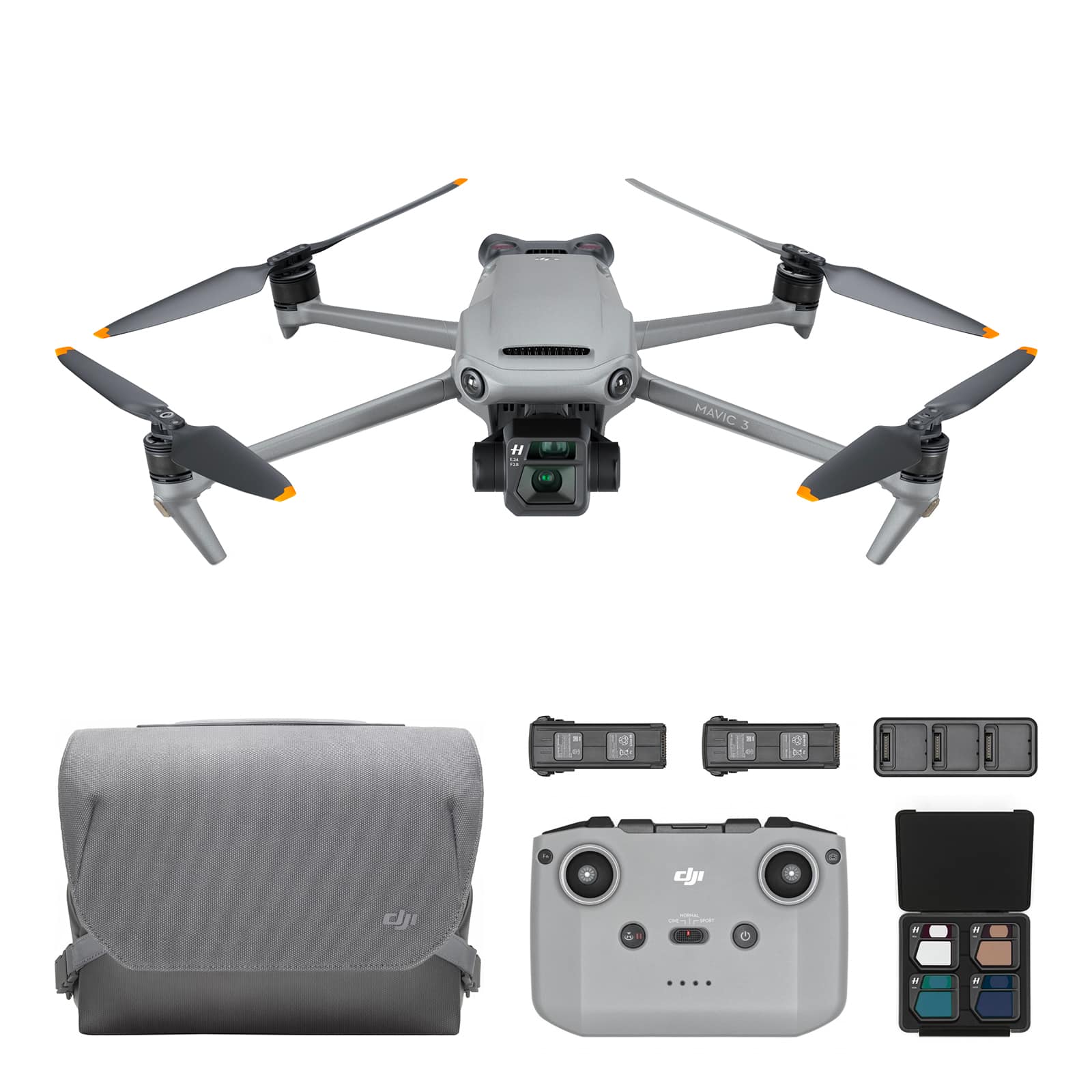
DJI - Mavic 3 Fly More Combo Drone with Remote Control - Gray
Capture stunning imagery with the legendary Hasselblad camera and enjoy a smooth flight with omnidirectional obstacle sensing. Every improvement on Mavic 3 sets a higher standard for aerial photography. Fly with Mavic 3 and discover imaging above everything.
DJI's flagship camera drone gets better
Customer Rating

5.0
Posted by: bredeker
from WI
on November 13, 2021
Images for this Review
(click to see full-size image)





By now, DJI is as much of a household name as any company in the drone industry. From the older Phantom products to the current Mavic line, DJI's quadcopter products have come to define how most people consider a drone to look and perform. The Mavic 3 is DJI's latest iteration of the conveniently portable Mavic series, and assumes the position of their consumer flagship product. Despite being "just" an iterative release that retains the immediately recognizable Mavic design, DJI significantly improved several key specs. This keeps the Mavic 3 at the head of its class, setting a new benchmark against which other drones will be compared. However, these improvements do come at a cost (literally). The Mavic 3 also launches with some features yet to be fully implemented - at this time, expected to be added in a January 2022 firmware update. Read on for my experience with what this drone offers now (right after its launch), and look for some images attached to this review that I've created with it in a few days of testing. Hopefully, this can help you make a decision on whether the Mavic 3 should be your first - or next - drone.
(In the interest of transparency, DJI provided a Mavic 3 to me for review, but the thoughts and opinions expressed here are my own. I have past experience with hobbyist "first person video" (FPV) drones, but this is the first I've used that is designed as an aerial photography platform. I also have experience with mirrorless cameras for personal use, so I'm familiar, if not an expert, with "advanced" camera settings that the Mavic 3 also provides control over.)
Since the Mavic 3 is foremost an aerial photography platform, the standout new feature has to be the new primary image sensor that it carries. The new sensor is a 20 MP Four Thirds format sensor, which means the Mavic 3 houses a comparable image sensor to that used in popular mirrorless cameras (such as Panasonic's GH5). I believe this is the largest image sensor integrated on a consumer camera drone to date, and larger sensors generally capture better images. It has very good specs on paper, and in practice I am very pleased with how good the pictures and video look. Videos can be recorded at up to 5.1K resolution at ("only") 50 FPS. At 4K resolution or lower, you'll be able to do 60 FPS, or even 120 FPS for slow-motion videos. (I generally have recorded at 4K 60FPS, as I found a 5K 50FPS video was just too much to play back smoothly on the computers I own.) The Mavic optionally supports capturing still images in RAW (Adobe DNG) format in addition to JPEG. Full manual controls are offered in both photo and video modes, so experienced photographers will have plenty of settings to adjust to get a perfect result. This includes control over a variable aperture, which seems to be a distinguishing feature of DJI's "pro" drones (the Mavic 2 Pro had it, but not the Air 2S). Of course, if you don't want to tweak all settings yourself, you'll get fantastic results even with the camera in full auto mode. That is how I've predominantly used it myself, and I haven't been disappointed in how any of the images or videos have looked.
In addition to the big upgrade on the primary camera, the Mavic 3 also integrates a secondary camera with a smaller sensor and telephoto lens - similar to the trend in smartphones over the last few years. The secondary camera is only enabled while the Mavic 3 is in "Explore Mode." When it is, it behaves similarly to multi-camera smartphones and automatically switches the active camera based on your zoom level. The maximum zoom level is 28x, though this is achieved using "digital zoom" (so you'll see some visible pixelation from the upscaling). I was impressed by how stable the image remains when zoomed in, even at the max level. In Explore Mode, the Mavic 3 does not allow control over most camera settings - only basic exposure compensation. Explore Mode also locks you in to specific, lower resolutions for both photos and videos and disables some features (like D-Log video and RAW capture). So, the primary camera will still clearly be your go-to for the best quality and most control. The name "Explore Mode" hints at DJI's intention - that it's for inspecting details and distant scenes before repositioning the drone to get a shot with the main camera. But, that's not to say that you can't still get worthwhile stills and video using it.
DJI also touts significant increases to the Mavic 3's flight time on a single battery charge over past models. DJI lists 40-46 minutes as the maximum flight time (depending on wind), which is close to a 50% increase over the Mavic 2 Pro. In my experience, I routinely had 25-30 minute flight times, and I was not even pushing the battery to its limit. I've ended all flights with the battery still above 30%, and an estimated flight time remaining of ten minutes or more. So, the official estimate seems quite plausible. And not only did DJI improve the endurance, but they improved the maximum ascent and descent performance as compared to the Mavic 2. (Top forward speed in sport mode is still basically the same, at 19 m/s or about 43 mph.)
DJI has also made improvements to their flight safety systems, including improvements to the obstacle avoidance sensor coverage and the return-to-home algorithm. The position of the sensors has been adjusted to better detect obstacles to the sides of the Mavic. Although I don't have experience with previous Mavics for comparison, the drone did automatically brake itself when approaching a house and trees from every direction that I tried. I also tested the return-to-home feature over a short distance around my house, and was impressed that it maneuvered around and between some trees and shrubs instead of the traditional "up and over" pathing. DJI uses similar pathfinding sophistication to avoid obstacles while the drone is tracking a target, though I did not test this directly since the ActiveTrack feature is not available yet (more on that below). The Mavic 3 detects ADS-B beacons from nearby manned aircraft and will both warn of their proximity and overlay the relative position on the video display. (Of course, the safety systems do not take the place of pilot responsibility, so if you are unfamiliar with the FAA requirements and restriction for drone, aka "sUAS," operation then you should learn about them before operating a Mavic 3.)
The DJI unboxing experience is first-rate, and feels a lot like unboxing a premium electronic device like a smartphone. Once the batteries are charged, initial set-up does take a bit of time. You'll need to install DJI's smartphone app, register for a DJI account if you do not have one, get the drone and controller turned on and connected, and then register the drone to your account. There will almost certainly be a firmware update to then install. It is all relatively straightforward, though, and I'll avoid discussing it at length due to space constraints on this review.
I've generally talked about the drone itself, but since this review is actually for the "Fly More" bundle, I'll run down the bundled extras quickly. In addition to the Mavic 3, this bundle includes a set of ND camera filters, two additional batteries, a multi-battery charger, several spare propellers, and a carrying case. It's a nice set. Extra batteries are one of the best improvements to any drone experience; even though the Mavic 3 has great battery life, the extras mean you won't have to worry nearly as much about missing out on prime "golden hour" shots over battery limits. The ND filters are a nice inclusion, particularly for video. They fit the new dual-lens design of the camera perfectly. The carrying bag is very premium, with metal buckles and and nifty backpack convertibility. I can't say the bundle is critical to enjoying a Mavic 3, though. Most of these things are (or will probably be) sold on their own and you may wish to pick up just the accessories that interest you.
One issue that I have to mention a bit more is the features that have not been implemented yet. Many of the advanced, semi-autonomous technologies that DJI has implemented on their previous drones are currently MIA. This includes things like "ActiveTrack," "Quick Shots," and even the Panorama mode. The buttons for these things are all visible, but they simply display a message on screen indicating that they're "coming soon." I have no real doubt that DJI won't implement these soon (the rumor is that they'll be released in January 2022), so it's a very temporary fault of the Mavic 3. However, the absence of these features might matter to someone hoping to purchase a Mavic 3 and use them over the 2021 year-end holidays. If you're reading this after January 2022, then hopefully this is no longer an issue.
I have had an extremely positive experience with the Mavic 3. It really does everything as well as a hobbyist could dream of - and I imagine even most professionals would have their needs largely met. All of this tech does come at a price premium over past generations (also perhaps affected by recent supply chain and inflation issues). DJI makes some perfectly good sibling models that offer a lot of the same bang for fewer bucks, so I think that if the Mavic 3 is stretching your budget, DJI still has other great options for you. But if you're interested in getting a camera drone as a serious hobby, the Mavic 3 seems like a great investment and I don't foresee anyone being disappointed.
I would recommend this to a friend!
Mobile Submission: False
0points
1out of 2found this review helpful.
The Core Innovations ANT800BAR Indoor TV Antenna Bar allows you to access HDTV channels up to 80 miles away, free of charge. The signal indicator displays reception strength for peak viewing potential, and the omni-directional bar design provides connectivity in all directions. Enjoy content in up to 4K full HD where supported.
Pleased with improved reception; nice style
Customer Rating

4.0
Posted by: bredeker
from WI
on October 25, 2021
This indoor over-the-air HDTV antenna from Core Innovations has a bar-style design that makes it look very much like a small sound bar. I replaced a thin "sheet style" antenna with one of these (which, in the interest of full disclosure, I received from Core Innovations in exchange for this honest review), and find it to be a good upgrade. Although my TV tuner is detecting slightly fewer channels after the switch, I'm subjectively noticing stronger reception on at least one channel that commonly had reception glitches and warnings with the old antenna. So, the Core Innovations product seems like an improvement in functionality too.
After connecting the new antenna (setting it up almost the exact same place as the previous one) and doing the channel re-scan, I noticed that there were fewer channels found. This didn't seem to bode well to me for how well the new antenna's signal might stack up. However, I had made a list of all the channels available prior to the re-scan, and all of the missing channels were ones that we never used to begin with. (Mostly because we had marginal reception for them, and there were often nearer stations affiliated with the same broadcast network that had stronger signal.) But then some rainy weather hit, which normally causes lots of reception issues for us with our local Fox station - and the new antenna had hardly any glitches. Suspecting that it was actually doing better, I switched back and forth with the old antenna a few times. The old antenna had consistently more glitches (picture break-up, video artifacting, brief sound/video descync, etc.) and signal strength warnings every time. I can't say whether it's an across-the-board improvement, but this is the first antenna that's made a noticeable improvement, so for now I'm very happy with this.
Core Innovations has built in a simple signal-strength meter to this antenna. It's made of 3 bars that light up. All of them lit up when I tested it in a few candidate spots for mounting around our house. So, it may not be super-sensitive, or 3 bars aren't enough granularity to display subtle differences in strength. Since there seemed to be no spot better than the others, I just reused the same place that our existing antenna was mounted. Maybe this feature would be more valueable at a range closer to the advertised 80 mile max (we are located substantially less than 60 miles from all of the local broadcast locations, and thus not really pushing the limit).
The sound-bar-esque style is (subjectively) attractive, and of course can blend in well with other home theater equipment. Hardware is included to mount this antenna bar on a wall, but it can also stand on its own. The build quality is only average - it's made of lightweight plastic - but I don't find it concerning since antennas aren't usually subject to lots of handling. Overall, considering the improved reception that I noticed, I think it's a good product and especially worth consideration if you like the sound-bar-style design.
I would recommend this to a friend!
Mobile Submission: False
0points
0out of 0found this review helpful.
bredeker's Questions
bredeker has not submitted any questions.
bredeker's Answers

Google - Pixel XL 32GB (Verizon)
Add high-end performance to your everyday life with the Google Pixel XL. A quad-core processor, a 5.5-inch LED screen and 32GB of memory ensure this phone is able to handle daily life, and Corning Gorilla Glass 4 protects the screen. Easy cloud storage ensures you never run out of space on the Google Pixel XL.
Can u transfer ur songs and photo from ur iPhone to this kind of phone
Yes, the setup wizard lets you do this for songs, videos, photos, and more. (You can limit what you all transfer if you prefer.) I had a few music albums that did not transfer as readable files, but for the most part it worked well. It also kept most of my text message/iMessage history. You will need to turn off encrypted backups to let the Pixel have access to some of this stuff, but the setup process tells you how to do that if needed.
9 years, 1 month ago
by
Posted by:
bredeker
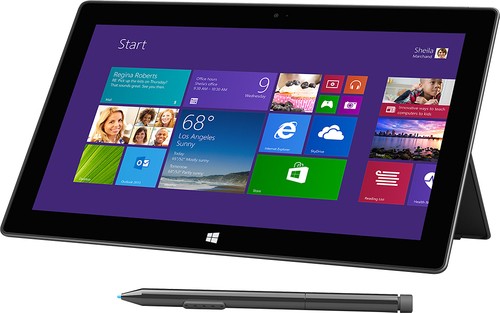
Microsoft - Surface Pro 2 - 256GB - Dark Titanium
Microsoft Surface Pro 2 Tablet: More capable than your average tablet but lighter and smaller than a laptop, the Surface Pro 2 features hands-on productivity with the ability to fully support Microsoft Office (sold separately). Multitask with side-by-side apps, prop up your tablet with the built-in kickstand, or connect accessories via the USB and display ports for a work-efficient desktop setup.
When will 256Gb version be available again? As of 05 Feb 2014 not available at Best Buy.
I noticed as of today (05 Feb 2014) that the 256Gb Surface Pro 2 is unavailable at the moment at Best Buy. Any word on when the new ones will roll out? And, will they be equipped with the newer i5-4300u processor (1.9GHz)?
Supply of these still seems to be constrained from Microsoft, so Best Buy is apparently only taking online orders for them yet (at least, none of the brick-and-mortar stores near me have shown availability). Best Buy periodically gets new stock in, so all I can say is keep checking. When they do come in, they sell out fast too. I was lucky enough to get an order in the second time that I saw stock available in January 2014. I can confirm that mine came with the new i5-4300U.
11 years, 10 months ago
by
Posted by:
bredeker
from
WI

Microsoft - Surface Pro 2 - 256GB - Dark Titanium
Microsoft Surface Pro 2 Tablet: More capable than your average tablet but lighter and smaller than a laptop, the Surface Pro 2 features hands-on productivity with the ability to fully support Microsoft Office (sold separately). Multitask with side-by-side apps, prop up your tablet with the built-in kickstand, or connect accessories via the USB and display ports for a work-efficient desktop setup.
does this Surface pro 2 256gb ssd 8Gb ram have the new Haswell processor in it ?
does this Surface pro 2 256gb ssd 8Gb ram have the new Haswell processor in it ?
or is this a older model that was in storage ?
cause in the past 2 months they updated the surface pro with the haswell processor .
I wasw wondering it if was the haswell processor is it the quad core one for dual core one ?
or is this a older model that was in storage ?
cause in the past 2 months they updated the surface pro with the haswell processor .
I wasw wondering it if was the haswell processor is it the quad core one for dual core one ?
The Surface Pro 2 models, including the 256 GB/8 GB model, all have dual-core mobile Haswell i5 CPUs. The first ones shipped with Core i5-4200U processors, but around the December 2013 timeframe Microsoft started making them with faster Core i5-4300U processors instead for the same price. If you order a new one it will most likely come with the newer, faster CPU.
11 years, 10 months ago
by
Posted by:
bredeker
from
WI

Microsoft - Surface Pro 2 - 256GB - Dark Titanium
Microsoft Surface Pro 2 Tablet: More capable than your average tablet but lighter and smaller than a laptop, the Surface Pro 2 features hands-on productivity with the ability to fully support Microsoft Office (sold separately). Multitask with side-by-side apps, prop up your tablet with the built-in kickstand, or connect accessories via the USB and display ports for a work-efficient desktop setup.
can this unit run adobe photoshop cc.exe not the metro app version ?
can this unit run adobe photoshop cc.exe not the metro app version ?
metro apps are useless when it comes to features and power use.
the real photoshop CC version is not an app and hogs a lot of memory when running on any pc even desktops.
so can this handle the real program of photoshop CC ?
metro apps are useless when it comes to features and power use.
the real photoshop CC version is not an app and hogs a lot of memory when running on any pc even desktops.
so can this handle the real program of photoshop CC ?
I haven't tried Photoshop personally, but you can install and run it since the Surface Pro has full-blown Windows 8 Pro and you can install any Windows application on it that you want. (Only the cheaper non-Pro Surfaces with Windows RT are limited to "Modern UI" apps from the Windows Store.) If you get the 256 GB or 512 GB Surface Pro 2 it will have 8 GB of RAM instead of 4 GB, and they all have fast flash memory for scratch file storage, so I expect Photoshop will run decently as long as you're not expecting workstation-class performance.
The artist for the Penny Arcade Internet comic strip has started to use a Surface Pro on occasion to draw the strip, and uses Adobe Creative Cloud programs on it. Search for "Penny Arcade Surface Pro" to get his take on it. (That was also for the older and slower first-gen Surface Pro.)
The artist for the Penny Arcade Internet comic strip has started to use a Surface Pro on occasion to draw the strip, and uses Adobe Creative Cloud programs on it. Search for "Penny Arcade Surface Pro" to get his take on it. (That was also for the older and slower first-gen Surface Pro.)
11 years, 10 months ago
by
Posted by:
bredeker
from
WI

